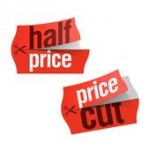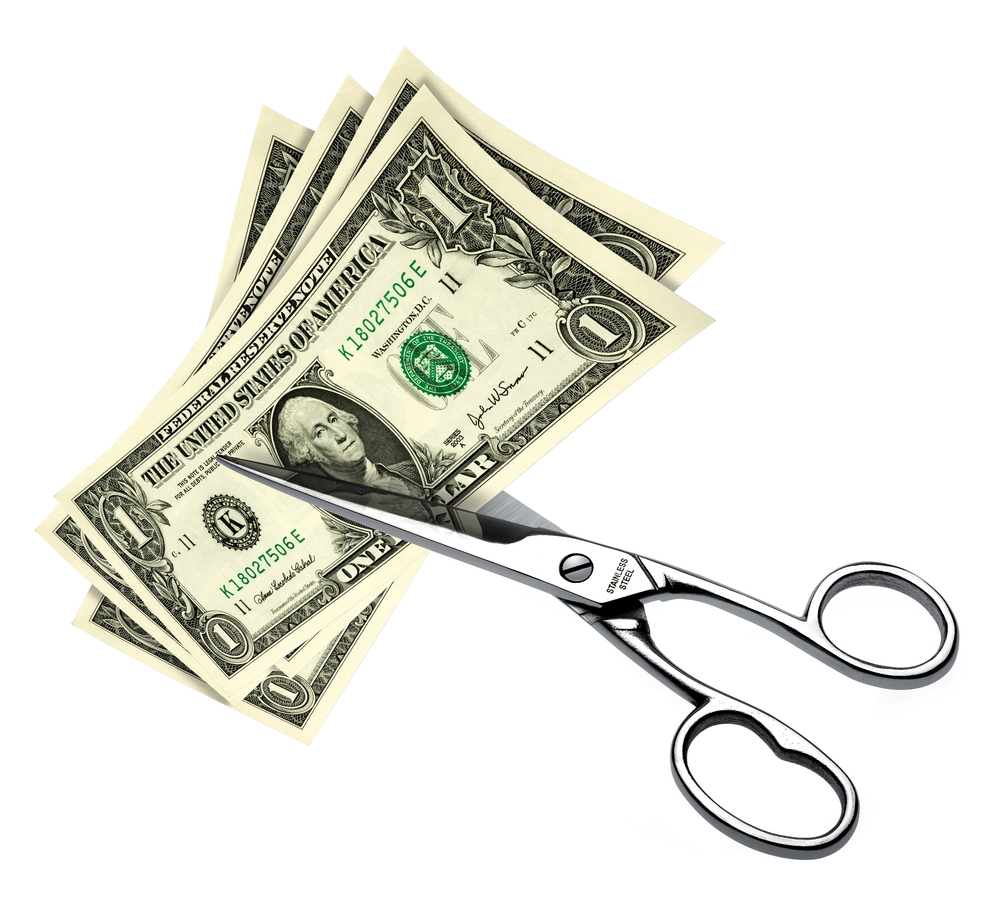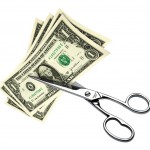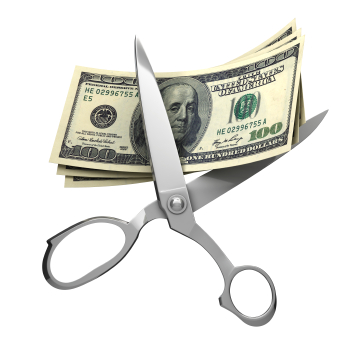John Wannamaker may not be a household name but he opened the first department store in Philadelphia in the late 1800’s and is believed to be the inventor of the price tag and the seasonal sale. He was the first retailer to place a half-page newspaper ad, and also the first full-page ad five years later. He is widely considered to be one of the fore-fathers of advertising and credited with the famous phrase: “Half the money I spend on advertising is wasted; the trouble is, I don’t know which half.”
His words survive as one of the most frequently quoted clichés in marketing and advertising, even after radio, TV and now the internet, have replaced the dominance of print advertising.
Why with all we’ve accomplished in the last one hundred and twenty years, is this quote still relevant and significant to you (and to all marketers) today?
In fact how do you know you’re not throwing away 2/3 of your advertising budget? Or perhaps even as much as 3/4?
How can you be sure that your next campaign, sitting on your desk waiting for your approval, won’t be an abysmal failure – sucking your bank account dry and producing no measurable influx of qualified leads and sales?
Do you know with certainty which half of your advertising budget is wasted? Want if you needed to find out?
Right now, your audience is getting harder to reach in all the traditional media channels, and the rules of marketing have changed. Print newspaper readership, radio listeners and even TV viewers are down. Consumers have adapted to new technologies – the internet, iTunes, podcasts, downloads – and can now comfortably avoid unwanted advertising in many of these old channels.
Many of the old ways are being replaced by new ones. The internet, content marketing, video and social media have emerged as the new, dominant players. To succeed in this new realm of advertising, requires a shift in both mindset and strategy.
You used to be able to get away with talking at your prospects (or having one-way conversations), now you must respond to their comments (positive and negative) in real time.
Where five years ago you could simply focus on spending less to find more local prospects, now you must excel at “being found” in a sea of global competitors.
Thankfully, these new mediums bring with them two significant benefits – targeting and measurability. Finally, improving your odds of determining which half of your advertising budget is wasted, is not only possible, but refreshingly do-able. You simply have to know which tips and tools to use to maximize your return on investment (ROI).
Here are five practical tips for developing an effective measurement strategy for your online and offline marketing communications – (and for determining which half of your advertising budget is wasted):
1) Monitor all incoming leads
Where possible, place a unique phone number (or email address) in different media placements to gauge which ad creative, copy, design elements or physical placement garners the most qualified traffic and sales. Each unique number or email address can easily be re-routed to your primary incoming line or email, so you can streamline the process of receiving and replying to these valuable enquiries. To minimize confusion with your target audience, try to refrain from using too many different numbers at once.
For some brands, that are highly identifiable and use a memorable phone number, tracking may not be viable. As an alternative, try recording the inbound calls and use the insights to train your sales team. While it may cost more, the recorded conversations will provide significant insight into the interest level, FAQ’s, objections and pain/issues of your prospects.
2) Use Split Testing
When you see a banner, video, text or display ad online, it has been sent to your computer or mobile device from an ad server. In most cases, what this means is that the advertiser will have been given the opportunity to split test their ads – to change their online creative in real time to monitor impressions, clicks, engagement and conversions. Essentially some of the audience will see one version of the ad, while others may see different versions.
But split testing doesn’t just apply to online ads and websites. In fact it can be used effectively with any online or offline marketing piece to test different creative, copy, or calls to action. It allows your audience to tell you in tangible terms which messages they prefer and are inclined to respond to favourably.
3) Set Up Specific Landing Pages
Most small business owners will make the mistake of wasting a lot of money on ads to send traffic direct to their homepage. More often than not, 90% of this traffic will bounce off your website within seconds because the content they are interested in is either not featured prominently on the homepage or is just too hard to find. In order to maximize the engagement of your traffic and your ROI, you need to ensure that you are taking your leads to pages where the specific content and offer you are advertising is the ONLY information presented.
The easiest way to do this is to set up landing (or private) pages on your site with unique URLs for each offer. The landing page will give each user a more customized experience and it will allow you to set the stage for an inquiry, call to action or sale.
These landing pages are also extremely effective for allowing you to track and measure ROI from both online and offline ads – when a prospect converts, you can directly attribute that conversion to a specific marketing piece because the landing page URL is unique for each one. Where possible, remember to use a user-friendly URL (one that is short, relevant and easy to remember) to drive traffic from offline media – it will boost retention, recall and action by up to ten times.
4) Google Analytics
Google Analytics is an invaluable tool that can help you measure what is working and what isn’t on your website. However, just like the human brain, most site owners haven’t fully tapped into the full potential and power of it. In addition to telling you where your traffic is coming from and which search terms or links were used to find you, Google Analytics also measures where users click most on a given page, how long they spent on your site and where they go when they navigate away from your page. Google analytics can provide you with enough data to isolate and eliminate marketing that’s not generating profitable growth.
Research indicates that the average conversion rate for a website is between 2.2 – 4%. What this means is that 96-97.8% of the visitors that came to your site today, left without taking any action. They key to minimizing the leakage and maximizing the percentage that remember your message and take action lies in analysing the data that Google can provide on your website traffic and trends. It doesn’t make sense to spend more money on marketing if a large percentage of your audience is choosing not to take action.
5) Stop Chasing Clicks and Eyeballs
A click (or eyeball viewing your offline ad) means nothing to your business. It earns no revenue and creates no brand equity. Your advertising has to have a tangible end goal – and it shouldn’t be to reach the most eyeballs or generate lots of clicks. To have a successful business, you need people to discover how you can cure their pain, seek more information, join your list, or purchase your product/service. Success lies not in how many people know what you do but rather in how many you are able to connect with and inspire to say “yes” to your product/service.
 What would it be worth to you if never had to worry again about competing based on price alone?
What would it be worth to you if never had to worry again about competing based on price alone?
If your customers keep asking you for a better price, I am going to show you how to get the price that you deserve and close more sales.
We now know there are 3 distinct parts of the brain and each one of them has a different function. However, only 1 of them is responsible for decision making and it fires up around 8 seconds before you are consciously aware that you have even made a decision. The research and information I am about to share with you hasn’t come from psychology, the personal development industry or even a marketing agency – these findings were made by neuroscientists studying brain wave activity with fMRI, EEG and retinal tracking devices. They were looking to find out which part of your brain lights up when it is presented with different stimuli and the findings have been documented and published in respected publications like the Wall Street Journal and the Harvard Medical Journal.
The biggest part of the brain is the neo cortex. We are the only species on the planet that has developed this part of the brain. It is the last thing that forms in the womb and it lights up when we listen to music, look at colours, speak, read and process numbers. If you ever hear people talking about right vs. left brain thinking, they are talking about the neo cortex. In a nutshell – IT THINKS.
Similarly, when your customer says “I need to think about it” or “is this the best price I can get?” this part of the brain is firing up and looking for data. This uses up tons of your brain energy and prolongs the decision making process. If you want to drag out the process of getting your customer to decide or compete on price, you want to make sure that your customer has to us this part of his brain. Make sure you give your customer lots of BIG words, numbers, graphs, lists of features and benefits, talk about your competitors and how you stack up next to them – and your customer will NOT decide BUT he will do a whole lot of thinking and take up more of your valuable time and energy in the process.
Let’s move on to the middle or mammalian brain – this is the part of the brain that we share will every warm blooded creature on the planet. This is where you process emotions and feel. But this is not where you make decisions.
At the top of your spinal cord, there is a collection of neurons – which are commonly referred to as the old or reptilian brain. This is the first part of your brain that is formed in the womb and it is the part that keeps you alive – all bodily functions that take place below the level of consciousness, are controlled by this part of your brain.
It is your fight or flight brain – and its sole responsibility is to ensure your safety and survival. It houses the amgydala – which is the chemical factory in your brain that regulates all bodily functions. And it is the part of the brain that lights up when you DECIDE.
It lights up even before you have conscious awareness that you have made a decision. Now, while it is very true that this is the most primitive part of your brain, the good news is that it is very predictable. By understanding how this part of your brain works, you will never again bore and overwhelm your customers AND you will never again be lured into the trap of competing based on price.
How will you do this? By understanding how this part of your customer’s brain works, you can help him to use the least amount of mental energy in processing your message which means that he will make quicker decisions. It is important to remember that unlike the neo-cortex up here (the thinking part of your brain), this part right of your brain is automatic – it does not think, it only DECIDES and ACTS. It is always at work scanning your environment looking for information of value to your survival.
So you might be wondering how does this apply to the price that you charge for your product/service?
Just for a moment, I want you to imagine that you are in the business of selling pizzas. Now, it doesn’t matter whether your business is called Pizza Hut, Dominos, Boston Pizza or Pizza World… you are basically selling an undifferentiated product and the market that you find yourself in looks price conscious, doesn’t it? The reason for that is simple – the consumer finds it hard to distinguish between your pizza and the next guy.
Now if you happen to BE the owners of a Chicago Deep dish pizza shop you might argue that your pizza is better because your crust is thicker and you provide more toppings and value. But in the eyes of the consumer, your pizza is still not really worth much more than the next guy’s pizza. You might be charging $20 and your competitor is charging $18.50. Why is that?
It’s because even though you think there is a difference, in the eyes of your customer, there isn’t. 95% of what you and the next guy offer are essentially the exact same thing. And as long as you keep operating in that zone with a marketing message that doesn’t stand out and stake a claim, you will continue to compete on prize because your customer is up in his neo-cortex trying to figure out which pizza is the best one to order.
So knowing this, what could you do differently? Well one company in 1973 identified a way to stand out and grab market share. It didn’t claim to have the best, the thickest or even the cheapest pizza, it just made you a promise that if you ordered from them, you would get it in 30 minutes or your pizza was free. It was the most successful campaign in the history of the industry – for good reason.
Think about it, when you order a pizza, what is the one question that you have in the back of your mind? I wonder when the pizza will get here?
Dominos answered that question for you. They stopped making you need to think about it and they triggered the part of your brain that decides and dials.
This is the power of Sales Seduction – understanding why your customer says YES and knowing what to say in order to close more sales. Can you see now how knowing this information can help you accelerate your sales process, close more sales, trigger decisions and allow you to charge a fair price for your product/service?
Great – so your homework today is to go back through one of your sales or marketing messages and identify all the ways that you are boring or overwhelming your prospects. The key to NOT competing on price ever again, lies in doing your homework to help you close more sales.
 Today I want to share with you 2 things that you should never do/include in your sales or marketing message, if you want to get more customers to your business.
Today I want to share with you 2 things that you should never do/include in your sales or marketing message, if you want to get more customers to your business.
To prove my point, I’m going to share with you two examples of what NOT to do.
I saw a billboard recently on a major freeway. It read “Texting While Driving KILLS”. Then down below in fine print were the words “For more driving tips, text ‘SAFETY’ to 79191.” Now I’m sure you are probably laughing or at least smiling right now because this is an obvious case of sending a mixed message. And you’re right, I’m sure it is very clear to you why this message is ineffective. But the sad part is – this type of miscommunication or presentation of conflicting ideas is seeping in and polluting your sales and marketing materials every day. To get more customers to your business, you have to stop making this costly mistake.
Take for example your website, your eNewsletter or your brochure/catalog. What exactly are you asking your prospect or customer to do? Did you make the mistake of trying to cram 3 or 4 competing requests onto one page? Did you ask them to buy your product, join your database, visit your blog and watch your latest video? Chances are, you got really excited about what you do and you wanted to share everything you could on just that one tiny page. And I can understand why you got excited but you confused your audience and most of them walked away because what you wanted them to do wasn’t clear.
Now what you did may not have been as blatant as “For more driving tips, text ‘SAFETY’ to 79191.” However, the end result was the same.
If you want to get more customers and prospects to your business, you need to focus on communicating one clear message. If your message is clear and there is only one action that they could take, you will find that the number of people who step forward and take that desired action will go up dramatically.
Now that brings me to my second point.
The second mistake I don’t want you make is to use words or sentences that are confusing. Take for example this sign I saw outside a motel – “Free Wifi Starting at $59.99”. I think the motel owner who put up this sign was either in a rush or ran out of space because he forgot a few important words. What he probably meant to say was “Free Wifi. Rooms starting from $59.99”. He only forgot two small words but those simple words made the difference between a message that was clear and one that made absolutely no sense at all.
Now you may not be offering free wifi but I bet you may have used or at least seen terms like “scalable architecture”, “a customer-centric model”, “ holistic approach” or “results-based focus”. These words mean nothing to the reptilian brain (the part of your customer’s brain that decides and takes action). That part of the brain is 45million years old and it struggles to process and understand complex words, numbers, unfamiliar symbols and graphs that contain too much information. If you want to speed up the decoding process and make it easier to get more customers to your business, you need to make your message simple. Choose words that are clear and easy to understand. Complete your thoughts and sentences – don’t make it difficult and give your customer the excuse – “I need to think about it”. If your customer has too think too hard to decode your message, he simply won’t make a decision
Now I want you to be honest with yourself – is there a chance you might be sending mixed messages to your potential customers? Are your sales/marketing messages clear and succinct? If not, now is the best time to go back and re-write your materials. If you want to get more customers to your business, you need to simplify what you are asking them to do and use language that is easy to interpret.
 If you’re in business, one of the most important questions that you must be asking yourself is “what is the best way to grow your business?” How can you take what you have, expand on it but keep your costs as low as possible?
If you’re in business, one of the most important questions that you must be asking yourself is “what is the best way to grow your business?” How can you take what you have, expand on it but keep your costs as low as possible?
Fortunately, history has given us plenty of good examples of how NOT to do this. Perhaps the best of these happened in 2001 – when thousands of companies went under in the dot com bubble.
But how did so many go so far wrong?
In those days, start-ups (with little or no income) and existing companies (with dreams of expanding their business online) were renting the biggest and best offices. They were signing huge print advertising contracts, paying ridiculous sums for banner ads and taking enormous salaries.
When sales were lower than expected and the cash to keep paying all those expenses dried up, these businesses had no way of easily adjusting their monthly expenditures because they were primarily FIXED, not variable. Their only option was to declare themselves bankrupt and close down.
Compare this situation with Amazon.com which started in a suburban garage with old doors on sawhorses for desks. By keeping fixed costs down, they were able to stay in business long enough to start generating a profit. They are now a huge company (with real offices) making huge profits.
So how does all of this apply to your company?
No matter how big your current business is, the aim is to grow your business while keeping your fixed costs as low as possible as a percentage of sales. And there are many practical ways to do this.
Begin by creating a simple excel spreadsheet of your current revenue and expenses each month. Ensure that you have correctly separated the fixed and variable costs of doing business. Roughly speaking, the breakdown should look something like this:
Revenue
– Cost of Sales (includes cost of goods and wages for subcontractors)
= Gross Profit
– Fixed costs (includes rent, wages, marketing, telephone and utilities etc.)
= Net Profit
Based on your current financial results, set your monthly revenue targets for the next 12 months and estimate the cost of goods sold. For example, if you currently generate $20,000/month in sales with a 60% gross profit margin, you might like to grow your business by 25%? Therefore, you would use a projected sales target of $25,000 each month with Cost of goods sold at around $10,000 as a starting point. This would leave you with a gross profit each month of $15,000. If your sales fluctuate each month due to seasonal variations, manually adjust your forecast to reflect these ups and downs so that you will have a more realistic picture of your financial performance.
Now here is where most business owners will go wrong…
Most business owners will make the mistake of assuming that fixed costs are fixed – the owner will just blindly start to place the existing amounts for rent, marketing, wages, telephone etc. into the financial projections. Fixed costs are referred to as fixed because they are fixed at a point in time. This does not mean however, that they are fixed forever and cannot be altered. In fact, when you are preparing a business plan and financial projections to grow your business, you should consider almost every aspect of your business as “up for debate and re-adjustment”.
That is one reason why you need a decent business plans – you can use it to re-evaluate and plan for the future so that you can improve and grow your business. Without a concrete plan, in all likelihood, you will continue to get the exact same results that you got last year.
Where you will get the most value in this exercise is by going back over each cost (fixed or variable) to identify opportunities to improve your gross and net profit margins. Cutting costs may be possible and advisable in some areas of your business. However, cutting costs [in isolation] is not usually an effective strategy to grow a business. In order to grow and improve your bottom line, you will need to ask yourself the question – “how can I grow my business without expanding costs”?
Here are some effective ways to do just that:
1. Think of ways to partner with others to expand your reach and sales without actually having to open another location or hire more full time employees. You may already have underutilized capacity to increase your sales right now.
2. Introduce products or services that complement the ones that you currently have and contribute more to the bottom line of your business.
3. Re-negotiate the terms or prices you have with your suppliers to increase your gross profit margin.
4. Selling online is a very cost effective way to increase your reach without increasing fixed costs.
5. If you manufacture goods, you could identify ways to increase production simply by tidying up, rearranging the layout of machines and planning more cleverly (to reduce work in progress and downtime). Often mistakes and rework can be costly to your business and surprisingly, they can be prevented by taking time during the business planning process to brainstorm solutions. Making better use of time is another fantastic way to increase production with minimal impact on fixed costs.
Surprisingly, 95% of business owners never take the time to create a business plan and forecast of revenues and expenses. Of the 5% that do, only a small portion refer back and measure their progress against their key performance targets. That is the number one reason why so many businesses either don’t make much profit, or worse, go under, each year.
A business plan doesn’t have to be 50 pages in length and take 200 hours to complete. It just has to be realistic and useful. To do this properly, follow my basic outline for projected revenues and expenses above. It should only take 48 hours of your time. 48 hours, in exchange for more sales, more profit and peace of mind, is a small price to pay.
 I’ve got a major challenge for you…
I’ve got a major challenge for you…
I want you to assess what you are currently spending on marketing – brochures, website, pay per click campaigns, PR, newspaper, direct mail, social media etc. – and I want you to slash the total budget by 20%.
No matter what you are selling and where you are selling it, I guarantee that you won’t miss the 20% you just saved and put back in your bank account. And there is a very good reason for that…
98% of the people who see your message either don’t remember it or are not compelled to take action. You are spending thousands of dollars each year on sales and marketing campaigns and the vast majority of the people who see your message don’t really “get” your message – so they can’t possibly recall it or buy from you.
So with the money you just saved, I’m going to show you how to increase your sales. To do that, I want you to take a few minutes right now to re-engineer your message from the ground up and give yourself a better chance of achieving cut through, retention and action with your ideal target audience. Thankfully, it won’t cost you much to take the time right now to create a message that increases your sales (by helping more of your prospects to say “yes”). And if more of your qualified leads say “yes”, the money you do have left to spend in your sales and marketing budget is going to produce a much better return.
To prove my point, I’d like to make you an interesting offer…
What if I were to give you either $50 cash right now or a piece of paper where I will write the net present value of a five year annuity on $10 at a compound annual interest rate of 10%, adjusted for CPI?
Which of these offers sounds more appealing and valuable to you? Which would you rather take right now? Or said another way, which of these can you take now, put in your wallet or spend it at the shopping centre?
Unless you are one of those very rare individuals who can calculate in your head the value of my second offer, I’m willing to bet you’d rather just take the $50. And that makes a whole lot of sense, because everyone knows what $50 is worth. There’s nothing confusing about it, is there?
The part of your brain that makes decisions is not interested in working hard to figure out what my message means and what it’s worth. That part of your brain is looking for something that is tangible and relevant.
And if you’re unsure about whether a message is tangible or not – ask yourself this simple question “would a 6 year old understand it?”
Think about it – if I offer you a $50 note, an orange or a book, you don’t have to think very hard to decipher the value or usefulness of what I am offering you, do you? All of these items are equally easy to understand. As soon as you see them, you know what they are and you know exactly what you can do with them, don’t you? $50 will buy you enough food to cook a meal, the orange is good for you and a book is something that you can read. There are no directions or heavy thinking required to make sense of what I am offering you. Your new brain doesn’t have to do any thinking (and wasting time) to get my message.
So what does this mean for you, your message and your customers?
If you are making it hard for your prospects and customers to understand what you do and whether they are getting a good deal, you need to spend some time right now making your offer more tangible. Ask yourself “does my message include a bunch of big words, fluff and jargon?” Could it be boiled down to something simple that even a 6 year old could understand? What do you need to do today to re-work and re-communicate it more clearly so that your prospects will be able to say “yes”? Can you simplify the words that you use or introduce photos or props to get your message across more quickly and clearly?
Producing a simple, succinct message is a lot harder than being lazy and throwing together an ad full of useless, complicated jargon and information. A good rule of thumb here is to remember that you should work harder to craft and simplify your message than your prospect has to in order to decipher it. Someone has to do the hard work – either you can do it before you put it out there or your audience will be forced to do it which means they may get stuck thinking about it instead of deciding.
Now if you are serious about saving money and you would like to increase your sales, you won’t spend another collar until you review your materials and do whatever it takes to make your message more tangible. You don’t have to spend more money to chase leads and increase your sales. What you really need to do is take the complication and confusion out of your message so that more of your prospects can say “yes” now.














